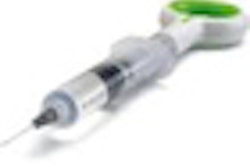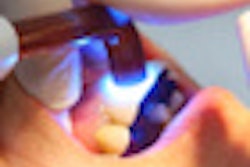By studying the surface structure of dental implants at the micro level and the nano level, researchers at the University of Gothenburg in Sweden have come up with a method that could shorten the healing time for patients who receive titanium dental implants, the school announced.
"Increasing the active surface at nano level and changing the conductivity of the implant allows us to affect the body's own biomechanics and speed up the healing of the implant," stated Johanna Löberg, a doctoral candidate in the University of Gothenburg Department of Chemistry, in a press release. "This would reduce the discomfort for patients and makes for a better quality of life during the healing process."
Orthopedic surgeon Per-Ingvar Brånemark was the first to realize that titanium was very body-friendly and could be implanted into bone without being rejected, according to the university. Titanium is covered with a thin layer of naturally formed oxide, and it is this oxide's properties that determine how well an implant fuses with the bone.
It became clear at an early point that a rough surface was better than a smooth one, and the surface of today's implants is often characterized by different levels of roughness, from the thread to the superimposed nanostructures. Anchoring the implant in the bone exerts a mechanical influence on the bone tissue known as biomechanical stimulation, and this facilitates the formation of new bone.
As the topography (roughness) of the surface is important for the formation of new bone, it is essential to be able to measure and describe the surface appearance in detail. But roughness is not the only property that affects healing.
Johanna Löberg has developed a method that describes the implant's topography from a micrometer to nanometer scale and allows theoretical estimations of anchoring in the bone by different surface topographies.
The method can be used to develop new dental implants to optimize the properties for increased bone formation and healing, according to the university. Löberg has also studied the oxide's conductivity, and the results show that a slightly higher conductivity results in a better cell response and earlier deposition of minerals that are important for bone formation.
The results are in line with animal studies and clinical trials of the commercial implant OsseoSpeed (Astra Tech), which show a slightly higher conductivity for the oxide and also an exchange between hydroxide and fluoride on the surface of the oxide. Surfaces with a well-defined nanostructure have a larger active area and respond quickly to the deposition of bone-forming minerals.
The project is a collaboration between the University of Gothenburg and Astra Tech, and will be further evaluated in follow-up studies.



















